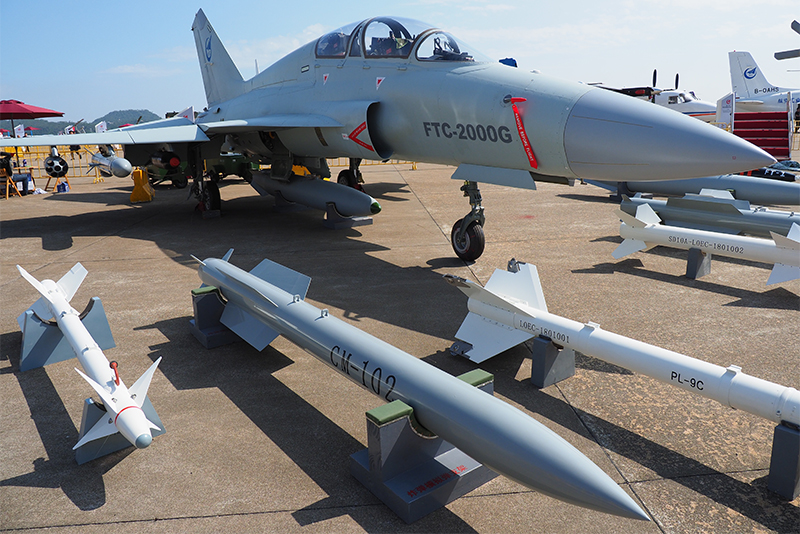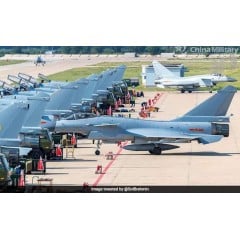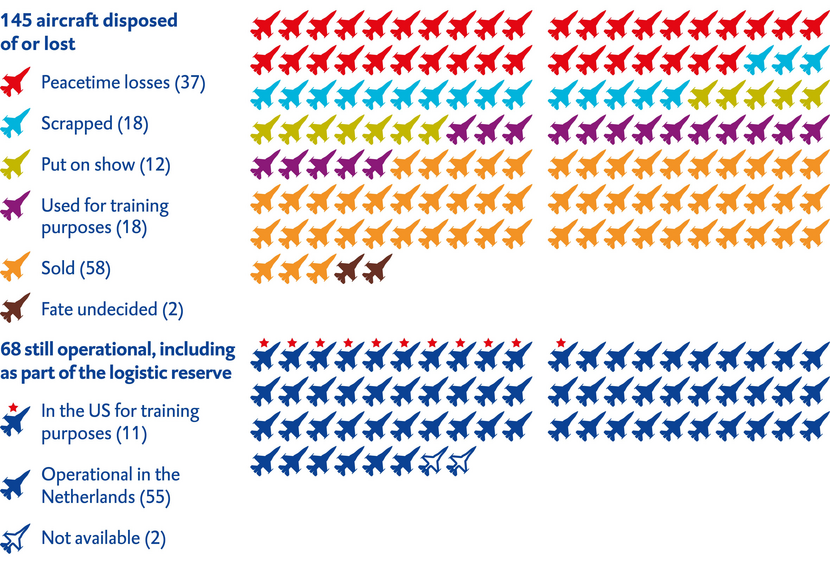Estás usando un navegador obsoleto. No se pueden mostrar estos u otros sitios web correctamente.
Se debe actualizar o usar un navegador alternativo.
Se debe actualizar o usar un navegador alternativo.
Argentina: Noticias del Ministerio de Defensa
- Tema iniciado KAISERDOGO
- Fecha de inicio
Este gobierno y otros K siempre quiseron comprar armas en China o en Rusia , es una manera de eliminar la resistencia de los prooccidentales y anglòfilos.Rojo, lo que quiere decir Spirit me parece, es porque eligió este momento para anunciarlo.
El tema es si hay un plan B!!!
La tutuca
Jorge II
Serpiente Negra.
Y si anuncias que vas por el caza chino o ruso por el veto britanico en minutos podes tener ofertas por aviones F-16/F18 incluso Rafales. Todo señores se negocia el tema es aquí. Siempre he dicho que desde hace 30 años se debiera haber seguido con la industrialización militar nacional pero ahora ya es tarde. Lo unico que hay que preocuparse es como afrontar todos los compromisos y planes de adiestramientos para el año que viene más aun cuando el presupuesto se achica más y no hablo en pesos sino en dolares.si por lo del Paraná ya saltaron las alarmas en Washington, no me quiero imaginar un caza chino , yo digo vamos por lo ruso
nico22
Colaborador
Supongamos que es así, entonces que no vaya a pedirle dinero al FMI, porque ya sabemos cuál es la respuesta!!!!gobierno y otros K siempre quiseron comprar armas en China o en Rusia , es una manera de eliminar la resistencia de los prooccidentales y anglòfilos.
Jorge II
Serpiente Negra.
Para fin de año o principios del año que viene hay un viaje a China de parte del presidente y del Ministro de Defensa;Van mis candidatos -->>
Categoría "Peor es nada" -->>
Categoría "Potable" -->>

Fuente imagen:

China’s AVIC announces first export order for FTC-2000G - Asian Military Review
GAIC has received its first export order for the indigenously developed FTC-2000G advanced jet trainer (AJT)/light-attack aircraft, announced on 16 April.asianmilitaryreview.com
Categoría "Lo que debería ser" -->>

Fuente imagen:

Uruguay, posible interés en el entrenador chino Hongdu L-15
The Fuerza Aérea Uruguaya (FAU) podría adquirir 8 entrenadores avanzados chinos L-15. Guillermo Facello, uno de los miembros de la Comisión...alejandro-8.blogspot.com

Fuente imagen:

Thunder heads towards Nigeria - Asian Military Review
Nigeria is inching close to being the first export customer of the jointly developed PAC and China CAC JF-17 Thunder fighter aircraft.asianmilitaryreview.com
Categoría "Me bajé un té de floripondio" -->>
Hasta ahí me atrevo a soñar . . .

Fuente imagen:

China Replaces Russian Engine in J-10C Jet With Locally-made WS-10 Taihang
A newly built J-10C fighter has been fitted with a domestically developed WS-10 Taihang engine to replace the Russian-made AL-31 engine. The development could come as bad news for Russia’s United Engine Corporation which supplied engines for China’s fighter jets for decades including for its...www.defenseworld.net
Cordiales Saludos
El FMI nunca autoriza crèditos para la compra de armas, no creo que le vayan a pedir màs plata, si facilidades para pagar lo que ya se debe, por ahì viene la presiòn de GB .Supongamos que es así, entonces que no vaya a pedirle dinero al FMI, porque ya sabemos cuál es la respuesta!!!!
Lo que quiero decir es que la presiòn de los organismos internacionales , que tienen como socio a GB , seguirà existiendo sobre la compras de armas que quiera hacer Argentina.
En ese caso vamos por el te de floripondio, si me voy a arriesgar con algo chino, que sea con algo mas o menos decente, el J-10 por lo menos es un avion importante dentro de sus fuerzas, los demas o no existen o son simples entrenadoresVan mis candidatos -->>
Categoría "Peor es nada" -->>
Categoría "Potable" -->>

Fuente imagen:

China’s AVIC announces first export order for FTC-2000G - Asian Military Review
GAIC has received its first export order for the indigenously developed FTC-2000G advanced jet trainer (AJT)/light-attack aircraft, announced on 16 April.asianmilitaryreview.com
Categoría "Lo que debería ser" -->>

Fuente imagen:

Uruguay, posible interés en el entrenador chino Hongdu L-15
The Fuerza Aérea Uruguaya (FAU) podría adquirir 8 entrenadores avanzados chinos L-15. Guillermo Facello, uno de los miembros de la Comisión...alejandro-8.blogspot.com

Fuente imagen:

Thunder heads towards Nigeria - Asian Military Review
Nigeria is inching close to being the first export customer of the jointly developed PAC and China CAC JF-17 Thunder fighter aircraft.asianmilitaryreview.com
Categoría "Me bajé un té de floripondio" -->>
Hasta ahí me atrevo a soñar . . .

Fuente imagen:

China Replaces Russian Engine in J-10C Jet With Locally-made WS-10 Taihang
A newly built J-10C fighter has been fitted with a domestically developed WS-10 Taihang engine to replace the Russian-made AL-31 engine. The development could come as bad news for Russia’s United Engine Corporation which supplied engines for China’s fighter jets for decades including for its...www.defenseworld.net
Cordiales Saludos
Señores, y creo que mi post tiene que ver con el ministerio de defensa, aunémonos en un sendero de desarrollo tecnológico autóctono, en cosas que valgan la pena. Pensemos no en el vehículo sino en lo que carga en el amplio sentido de la palabra. Lo mismo vale para el aire, el suelo y el mar.
La soberanía tecnológica nos encuentra sabios y capaces; pero desunidos y desorientados.
Es cuestión de fijar el norte.
La soberanía tecnológica nos encuentra sabios y capaces; pero desunidos y desorientados.
Es cuestión de fijar el norte.
nico22
Colaborador
Hablaba de él dinero para el país, no para armas.FMI nunca autoriza crèditos para la compra de armas, no creo que le vayan a pedir màs plata, si facilidades para pagar lo que ya se debe, por ahì viene la presiòn de GB .
En ese caso vamos por el te de floripondio, si me voy a arriesgar con algo chino, que sea con algo mas o menos decente, el J-10 por lo menos es un avion importante dentro de sus fuerzas, los demas o no existen o son simples entrenadores
Te respondo en el tema del multirrol que no fue, para no hacer OT.
Cordiales Saludos
Este "blanqueamiento" del veto británico (que no es nuevo, en lo más mínimo), puede servirle de excusa al MinDef para torcer seriamente la orientación del mercado proveedor a mirar.
No es novedoso el interés que tiene este gobierno (y el anterior, no vamos a negar) de un mayor acercamiento al gigante asiático.
Yo creo que esta nota, y otros sucesos que hay ocurrido en las últimas semanas, serán la excusa perfecta para mirar a Beijing...
No es novedoso el interés que tiene este gobierno (y el anterior, no vamos a negar) de un mayor acercamiento al gigante asiático.
Yo creo que esta nota, y otros sucesos que hay ocurrido en las últimas semanas, serán la excusa perfecta para mirar a Beijing...
De alguna manera, lo chino le parece mas atractivo que lo ruso, al MinDef... no solo a esta gestión...
Si tambièn pienso eso, en cuanto a lo de hacerlo publico ahora , la fecha de la respuesta de Kai es del 28 de octubre de 2020 y tambièn es una respuesta para el ùnico que seguia abogando por adquirir el FA50 en este gobierno que es el jefe de la FAA.Este "blanqueamiento" del veto británico (que no es nuevo, en lo más mínimo), puede servirle de excusa al MinDef para torcer seriamente la orientación del mercado proveedor a mirar.
No es novedoso el interés que tiene este gobierno (y el anterior, no vamos a negar) de un mayor acercamiento al gigante asiático.
Yo creo que esta nota, y otros sucesos que hay ocurrido en las últimas semanas, serán la excusa perfecta para mirar a Beijing...
FerTrucco
Colaborador
Este gobierno y otros K siempre quiseron comprar armas en China o en Rusia , es una manera de eliminar la resistencia de los prooccidentales y anglòfilos.
¿Y eso se tradujo en qué incorporaciones, tras doce años de gobierno (y contando)?
12+4 años y ninguna novedad...menuda las ganas de comprarEste gobierno y otros K siempre quiseron comprar armas en China o en Rusia , es una manera de eliminar la resistencia de los prooccidentales y anglòfilos.
¿Y eso se tradujo en qué incorporaciones, tras doce años de gobierno (y contando)?
Dos MI-171, patearon el tablero!!!! Jajaja
La mayoría de las compras fueron a través del FMS.
Hace varios meses anticipé que no se haría uso desde la cartera de Defensa de la opción de adquirir los KAI-50. Ahora el gobierno apela a un recurso de negar la posibilidad de compra por un bloqueo Británico que es cierto pero no es mas que una excusa para no comprar nada a nuestras FFAA y menos gastando dólares que no tenemos. No se olviden que este proyecto de adquirir los cazas Coreanos viene de la anterior gestión y se necesitaba de una razón para dar de baja esta posible operación de reequipar nuestra FAA.
Ahora habrá que ver si el plan es no incorporar mas que los IA63 III ó recurrir al mercado Chino que tal vez pueda vender armamento con algún plan de pago en forma de tierras o de otras concesiones.
Ahora habrá que ver si el plan es no incorporar mas que los IA63 III ó recurrir al mercado Chino que tal vez pueda vender armamento con algún plan de pago en forma de tierras o de otras concesiones.
Sobre los F-16 AM / BM que salieron en la página anterior ¿en qué está Holanda?
The Minister of Defence has yet to inform parliament about the fate of the F-16s once all the JSFs are taken into service. Let’s take a look at what happened in the past to those F-16s that were decommissioned.
The Ministry of Defence keeps a careful record of what has happened to all 213 F-16s bought by the Netherlands in the past. The following table shows the state of play as at the beginning of 2019.

Moreover, the cost of preparing the aircraft for sale and training and/or assisting personnel from the air force buying the aircraft tends to vary depending on the purchaser’s requirements. As a further point, getting the F-16s ready for sale and keeping them in a fit state also cost money. The Dutch air force can only sell aircraft that are ready for operational use. Until they are actually sold, therefore, the air force is forced to incur certain costs for ensuring that they remain airworthy, keeping them in hangars, making any necessary modifications, ordering spare parts and tools, and maintaining them.
Eleven of the operational aircraft are stationed in the US, as they are needed to enable new pilots to learn to fly the F-16. This is a process that must continue for the time being. The expectation is that, as more JSFs come into service, fewer F-16s will be required for initial training purposes. The redundant aircraft can then return to the Netherlands or be taken out of service.
In practice, the aircraft included in the logistic reserve are not all capable of taking to the air without notice. Due to a shortage of certain parts, the air force has from time to time removed parts from one or more of these aircraft, on the grounds that they were temporarily grounded anyway. This type of activity, which is referred to as a ‘technical shortage switch’, has resulted in aircraft missing a growing number of parts and hence no longer being available for use. This was the situation affecting two aircraft in the logistic reserve at the beginning of 2019.


 english.rekenkamer.nl
english.rekenkamer.nl
What is going to happen to the F-16s?
What is going to happen to the F-16s once the JSFs have been taken into service? The Minister of Defence still needs to decide on the fate of the F-16s. A look at the past reveals some of the options.The Minister of Defence has yet to inform parliament about the fate of the F-16s once all the JSFs are taken into service. Let’s take a look at what happened in the past to those F-16s that were decommissioned.
The Ministry of Defence keeps a careful record of what has happened to all 213 F-16s bought by the Netherlands in the past. The following table shows the state of play as at the beginning of 2019.
F-16s: the state of play to date (5 February 2019) (source: Ministry of Defence)

145 aircraft disposed of or lost
Peacetime losses
The Ministry of Defence claims that there have been 39 peacetime losses of aircraft, but two of these have been reassigned to a new purpose (such as being put on show). This explains the figure of 37 quoted above.Scrapped, put on show or used for training purposes
A number of the other F-16s were no longer fit for service. These have been scrapped, put on show or used for training purposes. This results in the aircraft in question losing their registration numbers and hence their status as active military aircraft.- 18 F-16s have been scrapped, i.e. all usable parts have been stripped off the aircraft, such as wings, engines and components that are either difficult or impossible to obtain on the open market. In other words, the aircraft have been cannibalised.
- 12 F-16s are now on display at the entrances to the air forces bases in Leeuwarden and Volkel, at the Military Museum in Soesterberg and in various other places.
- 18 F-16s are in use for training purposes, either by technical personnel who need to learn how to maintain an F-16 or for the training of firefighters.
- The fate of two aircraft is as yet undecided.
Sold
The Ministry of Defence has sold a total of 58 F-16s. Whenever the government is planning to sell one or more F-16s, the Minister reports this to parliament. The Netherlands has sold F-16s to two countries:- 2006-2007 : 18 aircraft sold to Chile;
- 2008-2011 : 19 aircraft sold to Chile;
- 2008: 6 aircraft sold to Jordan;
- 2017: 15 aircraft sold to Jordan.
Moreover, the cost of preparing the aircraft for sale and training and/or assisting personnel from the air force buying the aircraft tends to vary depending on the purchaser’s requirements. As a further point, getting the F-16s ready for sale and keeping them in a fit state also cost money. The Dutch air force can only sell aircraft that are ready for operational use. Until they are actually sold, therefore, the air force is forced to incur certain costs for ensuring that they remain airworthy, keeping them in hangars, making any necessary modifications, ordering spare parts and tools, and maintaining them.
68 aircraft still operational, including as part of the logistic reserve
The Minister of Defence had already decided in 2011 to reduce the number of operational F-16s from 87 to 68, and to sell the rest. This resulted in the second sale of aircraft to Jordan in 2013, leading to the actual delivery of the aircraft in 2017. In 2013, the Minister of Defence decided that a further reduction was needed: of the 68 remaining aircraft, only 61 would be formally regarded as operational. The remainder would henceforth be classified as forming what was known as a ‘logistic reserve’. The latter aircraft retained their registrations and could be deployed if necessary. One of the aims of this decision was to reduce the number of flying hours per F-16 and hence to lower the cost of maintaining the ageing aircraft. A total of 68 aircraft would be available for performing the workload of 61 aircraft. In other words, the F-16 would henceforth be operating on a part-time basis.Eleven of the operational aircraft are stationed in the US, as they are needed to enable new pilots to learn to fly the F-16. This is a process that must continue for the time being. The expectation is that, as more JSFs come into service, fewer F-16s will be required for initial training purposes. The redundant aircraft can then return to the Netherlands or be taken out of service.
In practice, the aircraft included in the logistic reserve are not all capable of taking to the air without notice. Due to a shortage of certain parts, the air force has from time to time removed parts from one or more of these aircraft, on the grounds that they were temporarily grounded anyway. This type of activity, which is referred to as a ‘technical shortage switch’, has resulted in aircraft missing a growing number of parts and hence no longer being available for use. This was the situation affecting two aircraft in the logistic reserve at the beginning of 2019.


What is going to happen to the F-16s? | Netherlands Court of Audit
What is going to happen to the F-16s once the JSFs have been taken into service? The Minister of Defence still needs to decide on the fate of the F-16s. A look at the past reveals some of the options.
Temas similares
- Respuestas
- 10
- Visitas
- 3K
- Respuestas
- 55
- Visitas
- 9K
- Respuestas
- 28
- Visitas
- 5K
- Respuestas
- 43
- Visitas
- 10K
